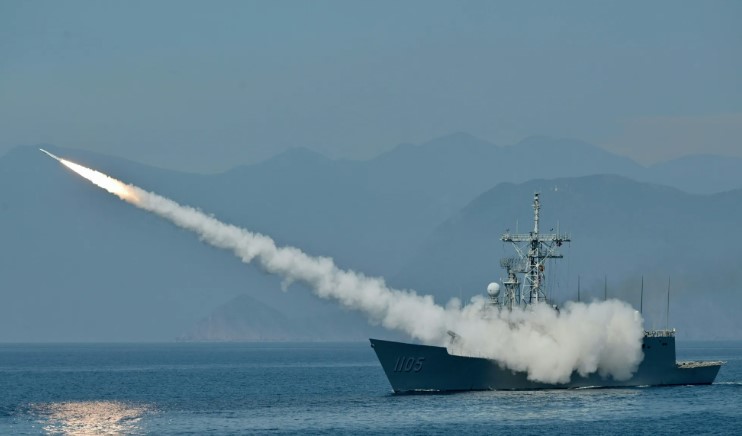The United States is sending powerful anti-ship missiles to a very important area close to Taiwan. The Luzon Strait is the name of this region.
Strategic Missiles Deployed Near Taiwan
It lies between the Philippines and Taiwan and is used by many ships to travel between the Pacific Ocean and the South China Sea. The missiles will be placed in the Batanes Islands, which are part of the Philippines and located near this strait.
This missile deployment will happen during a big military training exercise called Balikatan 2025. In this exercise, the U.S. military will work together with the armed forces of the Philippines and other allies. These missiles are part of a system called NMESIS, which stands for Navy-Marine Expeditionary Ship Interdiction System. These systems use Naval Strike Missiles that can hit enemy ships from far away.
This is the first time that the U.S. is sending this type of anti-ship missile system to the Batanes Islands. The missiles won’t be launched during the exercise, but the system will be set up and ready. The goal is to practice how to quickly move and use the missiles in case they are needed.
The NMESIS will be placed on the islands by using aircraft from the U.S. Army and U.S. Air Force. These aircraft will fly the launchers from the main island of Luzon to several islands in Batanes. The U.S. Marines will establish a facility known as a Fires Expeditionary Advanced Base once they arrive. This base will simulate real missions by pretending to fire the missiles without launching them.
Advanced Systems Strengthen Defense
The NMESIS system is very important because it gives the U.S. Marines new abilities to stop enemy ships from entering certain areas. It also helps the U.S. work better with the Navy. In this case, it also supports the Philippines’ own defense plans, which focus on protecting the country’s long coastline, especially around Northern Luzon.
The Philippines had asked for these systems after last year’s Balikatan drills in Batanes. During those exercises, U.S. forces had already tested rocket systems and placed special sensors in the area. In order to prepare for future operations, they also examined the state of Batanes’ ports and nearby locations on Luzon.
The group handling the missile system is a U.S. Marine unit based in Hawaii. This unit is called the 3rd Marine Littoral Regiment, or 3rd MLR. They recently received the NMESIS and are the first group in the Indo-Pacific region to have these anti-ship weapons. More missile launchers are planned to be sent to another unit based in Okinawa, Japan, as operations expand beyond Luzon.
Along with the NMESIS, the U.S. Marines will also deploy a powerful radar system called AN/TPS-80 Ground/Air Task-Oriented Radar. This radar helps detect ships and aircraft. It will be placed in Northern Luzon to support the advanced base operations. A similar radar was used last summer in Japan during another military exercise.
Power Play Turns Toxic: U.S. Deploys F-16 Jets to Taiwan and Philippines, China Issues Stark Warning
Luzon Strait Now Under Watch
The U.S. is deploying NMESIS anti-ship missiles to the Batanes Islands during Balikatan 2025, marking the first time such systems will be placed near the Luzon Strait. This 250-kilometer-wide waterway between the Philippines and Taiwan is a key sea route for trade and military movement.
From Batanes, the missiles can strike targets up to 185 kilometers away, giving U.S. and partner forces the ability to monitor and potentially block ship traffic in the region. Experts say this move strengthens sea control and makes it harder for enemy ships to pass unnoticed.
Balikatan 2025 will involve troops from the U.S., Philippines, Australia, and Japan, focusing on areas like Palawan and Luzon. In past drills, forces practiced joint operations by sinking a retired ship. Philippine troops have been told to stay alert, as conflict near Taiwan could also impact the Philippines.
This deployment demonstrates the expansion of U.S.-Philippines defense cooperation since 2022.

